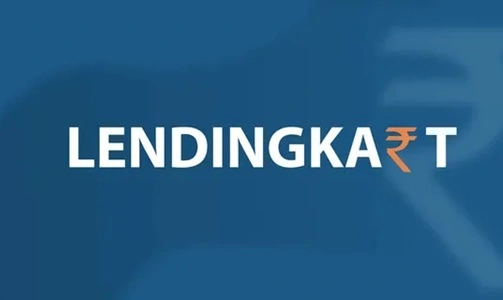Lendingkart, founded in 2014 by Harshvardhan Lunia and Mukul Sachan, is a leading digital lending platform in India focused on providing quick and hassle-free loans to small and medium-sized enterprises (SMEs). By leveraging technology and data analytics, Lendingkart has revolutionized the traditional lending process, making it more accessible and efficient for businesses that often struggle to secure funding through conventional banking systems. This article examines Lendingkart’s business model and explores how the platform generates revenue.
Overview of Lendingkart’s Business Model

Lendingkart operates on a B2B (Business-to-Business) and B2B2C (Business-to-Business-to-Consumer) model, catering to the financial needs of SMEs. Its business model centers around:
- Digital Lending Platform: Using technology to provide working capital loans to small businesses.
- Paperless Process: Offering loans with minimal documentation and quick approval times.
- Data-Driven Credit Assessment: Leveraging AI and machine learning to assess the creditworthiness of borrowers based on alternative data.
- No Collateral Required: Providing unsecured loans to businesses that may not have assets to pledge as collateral.
By addressing the funding challenges faced by SMEs, Lendingkart aims to bridge the credit gap in the Indian market.
Revenue Streams
Lendingkart generates revenue through multiple channels, primarily focusing on interest income and associated fees:
a) Interest Income
The primary source of revenue for Lendingkart is the interest earned on loans provided to SMEs. These loans are typically short-term in nature, with tenures ranging from 6 to 36 months.
Revenue Model:
- Lendingkart charges interest rates based on the borrower’s creditworthiness, repayment capacity, and the risk profile assessed by its AI-powered algorithms.
- Interest rates usually range between 12% and 24% annually, depending on the loan size and risk involved.
b) Processing Fees
Lendingkart charges a one-time processing fee for every loan disbursed. This fee covers administrative costs associated with loan approval and disbursement.
Revenue Model:
- Processing fees typically range from 2% to 3% of the loan amount.
- This upfront fee contributes significantly to Lendingkart’s revenue.
c) Late Payment Penalties
If borrowers fail to repay their installments on time, Lendingkart charges late payment fees or penalties. These charges incentivize timely repayment while adding to the company’s income.
Revenue Model:
- Penalty rates are predefined in the loan agreement and vary based on the overdue amount and delay duration.
d) Lendingkart 2gthr Platform
Lendingkart has a co-lending platform called Lendingkart 2gthr, which allows financial institutions, NBFCs (Non-Banking Financial Companies), and banks to partner with Lendingkart to disburse loans. The platform facilitates partnerships by managing credit assessment and loan origination.
Revenue Model:
- Lendingkart earns a commission or revenue share from partner institutions for every loan disbursed through the platform.
- The company also charges a platform usage fee for its technology and analytics services.
e) Portfolio Management Fees
For co-lending and partnerships, Lendingkart offers portfolio management services, including loan tracking, repayment collection, and risk assessment.
Revenue Model:
- Partner financial institutions pay a fee for managing and monitoring loan portfolios on their behalf.
f) Credit Assessment Services
Lendingkart uses proprietary AI and data analytics tools to assess the creditworthiness of borrowers. These tools analyze over 5,000 data points, including GST filings, bank statements, and social media activity.
Revenue Model:
- Lendingkart licenses its credit assessment tools to banks and NBFCs, generating additional revenue.
g) Cross-Selling Financial Products
Lendingkart collaborates with insurance providers and financial service companies to offer value-added services like:
- Business insurance.
- Loan protection plans.
Revenue Model:
- Commissions earned on the sale of these products.
h) Loan Origination Fees
When partnering with financial institutions for loan disbursement, Lendingkart charges loan origination fees for onboarding customers and facilitating the loan process.
Cost Structure
Lendingkart’s operations involve several cost components that support its digital lending model:
a) Technology and Infrastructure
The company invests heavily in AI, machine learning, and cloud-based platforms to ensure efficient loan processing and credit assessment.
b) Customer Acquisition
Lendingkart spends significantly on digital marketing, partnerships, and referral programs to attract SME borrowers.
c) Loan Disbursal Costs
Costs related to managing funds, partnerships with banks/NBFCs, and operational overheads are integral to its lending operations.
d) Loan Defaults
As with any lending business, non-performing assets (NPAs) or defaults by borrowers constitute a risk and cost for Lendingkart.
e) Regulatory Compliance
Compliance with RBI guidelines and other regulatory requirements adds to operational costs.
Unique Features Driving Revenue Growth
Lendingkart employs several strategies to maintain its competitive edge and drive revenue growth:
a) Technology-Driven Lending
Lendingkart’s proprietary algorithms analyze alternative data sources like transaction history, tax filings, and customer feedback to assess creditworthiness quickly and accurately.
b) Quick Disbursal
Loan approvals and disbursals are completed within 72 hours, making Lendingkart a preferred choice for SMEs in urgent need of funds.
c) Flexible Loan Offerings
Lendingkart offers unsecured loans with flexible repayment options, catering to businesses that face seasonal cash flow variations.
d) Wide Market Reach
With operations in over 1,300 cities and towns in India, Lendingkart has expanded its services to Tier 2 and Tier 3 cities, reaching underserved markets.
e) Partnership Model
The Lendingkart 2gthr platform allows the company to scale operations without significantly increasing its balance sheet risk.
Challenges and Opportunities
Challenges
- Credit Risk: The risk of loan defaults, especially in the SME sector, can impact profitability.
- Intense Competition: Competing with other digital lenders and traditional banks poses a challenge.
- Regulatory Scrutiny: Adhering to strict guidelines from the Reserve Bank of India (RBI) requires constant vigilance.
Opportunities
- Financial Inclusion: Expanding into rural and semi-urban areas offers significant growth potential.
- Digital Transformation: Increased adoption of digital tools among SMEs creates demand for tech-enabled lending solutions.
- Partnership Growth: Collaborating with more banks and NBFCs can amplify Lendingkart’s reach and revenue.
- New Financial Products: Expanding offerings to include savings accounts, digital payments, or wealth management solutions.
Financial Overview
Lendingkart has raised significant funding from investors like Fullerton Financial Holdings, Bertelsmann India Investments, and India Quotient. With over ₹12,000 crore in loans disbursed to date, the company has established itself as a leader in the SME lending space. While Lendingkart has faced challenges like loan defaults during the pandemic, its tech-driven model and diverse revenue streams have ensured steady growth.
Conclusion
Lendingkart’s business model highlights the power of technology in bridging the credit gap for SMEs. By offering quick, flexible, and accessible loans, the platform has emerged as a reliable partner for small businesses across India. With its focus on innovation, partnerships, and financial inclusion, Lendingkart is well-positioned to sustain its growth and remain a key player in India’s evolving fintech ecosystem.

